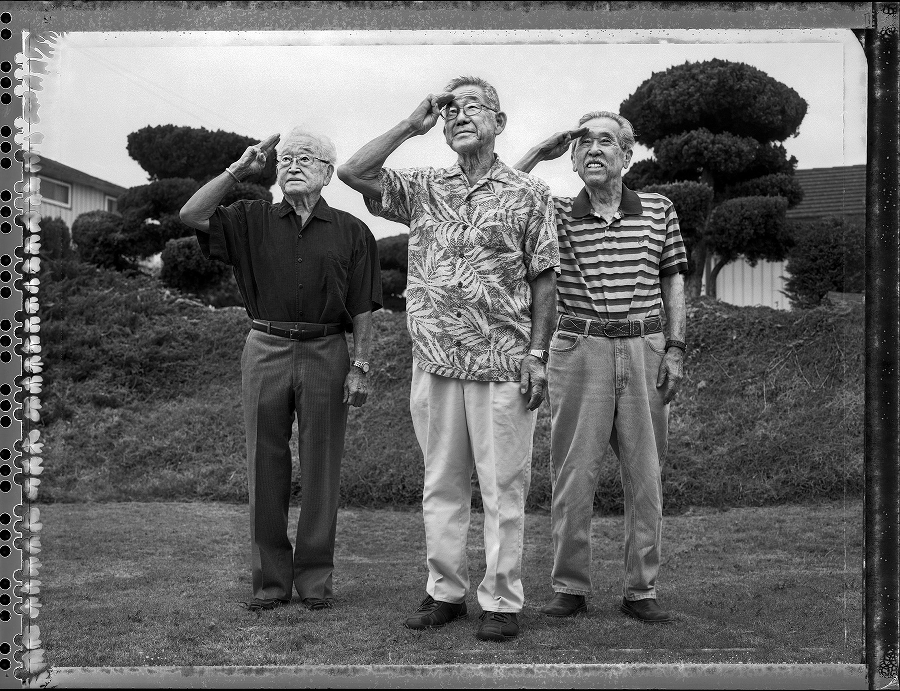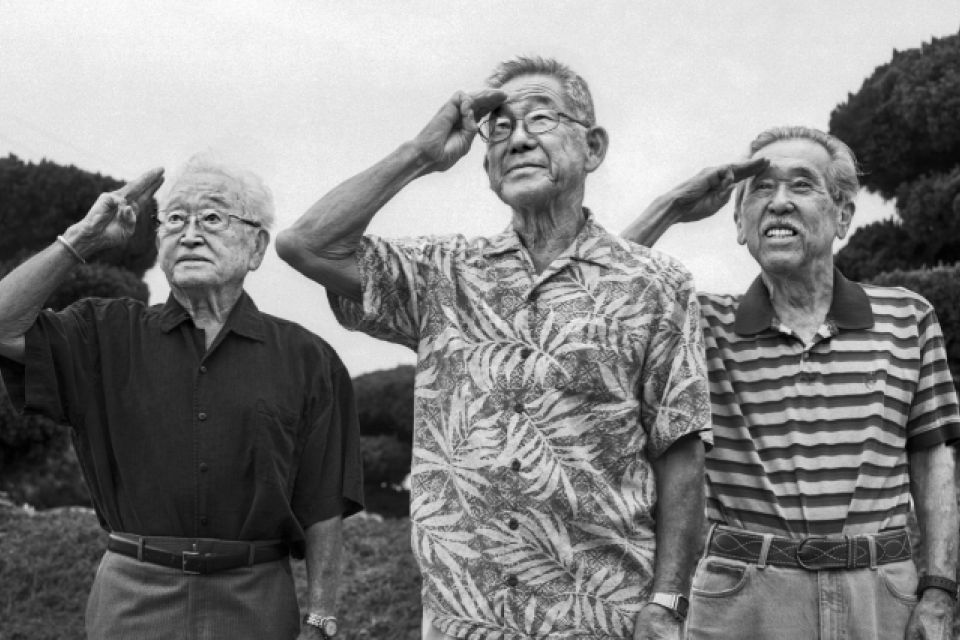FOR IMMEDIATE RELEASE - October 25, 2018
PRESS CONTACTS:
Leslie Unger - lunger@janm.org - 213-830-5690

PHOTO EXHIBITION AT JAPANESE AMERICAN NATIONAL MUSEUM DEPICTS TRIUMPH OVER ADVERSITY
Los Angeles, CA—Gambatte! Legacy of an Enduring Spirit, going on view at the Japanese American National Museum on November 17, 2018, presents large-format contemporary photos taken by Pulitzer Prize-winning photojournalist Paul Kitagaki Jr. next to images shot 75 years ago by such noted photographers as Dorothea Lange, Ansel Adams, and others. Each pairing features the same individuals or their direct descendants as the subject matter and brings to light the stories of Japanese Americans who were forcibly incarcerated during World War II. Inspired by the Japanese concept of gambatte—to triumph over adversity—the exhibition chronicles the strength and legacy of a generation of Japanese Americans who persevered over unimaginable hardship. The exhibition will remain on view through April 28, 2019, and is included in regular museum admission.

On February 19, 1942, President Franklin D. Roosevelt issued Executive Order 9066, which allowed for the designation of military areas “from which any or all persons may be excluded.” Just days later, two such areas were designated. The United States government then established the War Relocation Authority (WRA) to manage the forced removal and incarceration of 120,000 Japanese Americans, and during the WRA’s existence, it commissioned photographers—Dorothea Lange, Clem Albers, Tom Parker, Francis Stewart, and others—to document the treatment of these Americans during the process of forced removal, at assembly centers, and at America’s concentration camps.
In the late 1970s, Kitagaki learned that Lange had photographed his family in 1942 as they waited for a bus in Oakland, California, to take them to the Tanforan Assembly Center, a designated detention facility at the time. Since this discovery, Kitagaki has been on a mission to identify, seek out, and document other individuals captured in WRA-era photographs.
“As I examined Lange’s work, I realized that every photograph represented an untold story that was quietly buried in the past,” said Kitagaki. “I had many questions and few answers. Most importantly, I wanted to know how Executive Order 9066 forever changed the lives of these incarcerees who unjustly lost their homes, businesses, and sometimes, their families.”
To date, Kitagaki has created contemporary images of more than 60 individuals initially photographed by WRA staff and others. In homage to his predecessors, Kitagaki uses a 4" x 5" camera, similar to the equipment used by photographers in the 1940s, with black-and-white film. Illuminating a very dark time in American history as well as the legacy of its survivors, these large-format images tell personal and heartfelt stories that should not be forgotten. While Japanese American incarceration occurred more than 75 years ago, current events and contemporary political rhetoric demonstrate that racism and prejudice still exist. The stories told in this exhibition may be more relevant now than ever.
Gambatte! is sponsored in part with support from the National Park Service, Tanforan Assembly Center Memorial Committee, and the Contra Costa Japanese American Citizens League.
For more information about Gambatte! and related programming at JANM, visit janm.org/gambatte.
NOW ON VIEW AT JANM:
hapa.me – 15 years of the hapa project
Through October 28, 2018
In hapa.me, artist Kip Fulbeck pairs photographs and statements from his groundbreaking 2006 exhibition, kip fulbeck: part asian, 100% hapa, with contemporary portraits of the same individuals and newly written statements, showing not only their physical changes in the ensuing years, but also changes in their perspectives and outlooks on the world.
Kaiju vs Heroes: Mark Nagata’s Journey through the World of Japanese Toys
Through March 24, 2019
In California in the 1970s, Mark Nagata was living an all-American childhood when an aunt and uncle serving on a US military base in Japan sent him a box filled with some of that country’s most popular toys. They were kaiju and heroes, and these gifts inspired him to zealously collect vintage Japanese vinyl toys over the course of his entire life. Kaiju translates to “strange creature” in English but has come to mean “giant monster” referring to the creatures like Godzilla and Mothra that inhabited the postwar movie and television screens of Japan. The advent of these monsters brought about the creation of characters to combat them—hence the emergence of pop-culture heroes like Ultraman and Kamen Rider. Kaiju vs Heroes: Mark Nagata’s Journey through the World of Japanese Toys showcases hundreds of dazzling vintage and contemporary Japanese vinyl toys, providing a feast for the eyes and the imagination.
Common Ground: The Heart of Community
Ongoing
Incorporating hundreds of objects, documents, and photographs collected by JANM, this exhibition chronicles 130 years of Japanese American history, from the early days of the Issei pioneers through the World War II incarceration to the present. In commemoration of the 30th anniversary of the Civil Liberties Act of 1988, the final section of Common Ground has been reimagined to further emphasize the redress movement, the landmark passage of the Act, and its relevance today.
About the Japanese American National Museum (JANM)
Established in 1985, the Japanese American National Museum promotes understanding and appreciation of America’s ethnic and cultural diversity by sharing the Japanese American experience. Located in the historic Little Tokyo district of downtown Los Angeles, JANM is a hybrid institution that straddles traditional museum categories and strives to provide a voice for Japanese Americans as well as a forum that enables all people to explore their own heritage and culture. Since opening to the public, JANM has presented over 80 exhibitions onsite and traveled 20 of its exhibitions to locations around the world, including the Smithsonian Institution and the Ellis Island Museum in the United States, and several leading cultural museums in Japan and South America.
JANM is located at 100 N. Central Ave., Los Angeles. Museum hours are Tuesday, Wednesday, Friday, Saturday, and Sunday from 11 a.m. to 5 p.m. and Thursday from noon to 8 p.m. General admission is $12 adults, $6 students and seniors, free for members and children under age five. Admission is free to everyone on Thursdays from 5 p.m. to 8 p.m. and every third Thursday of the month from noon to 8 p.m. General admission prices and free admission times may not apply to specially ticketed exhibitions. Closed Monday, 4th of July, Thanksgiving, Christmas, and New Year’s Day. For more information visit janm.org or call 213.625.0414.

